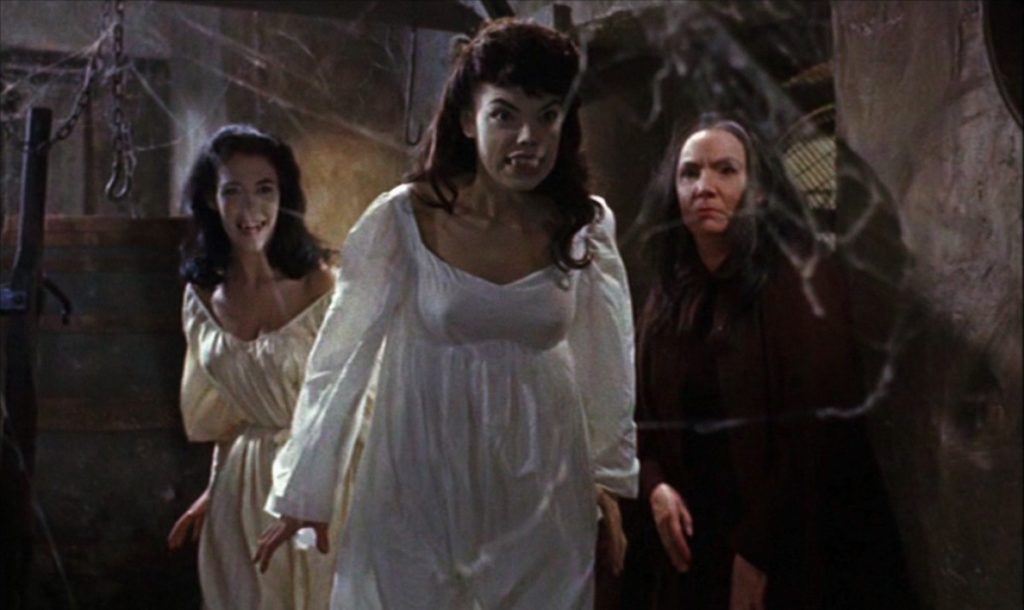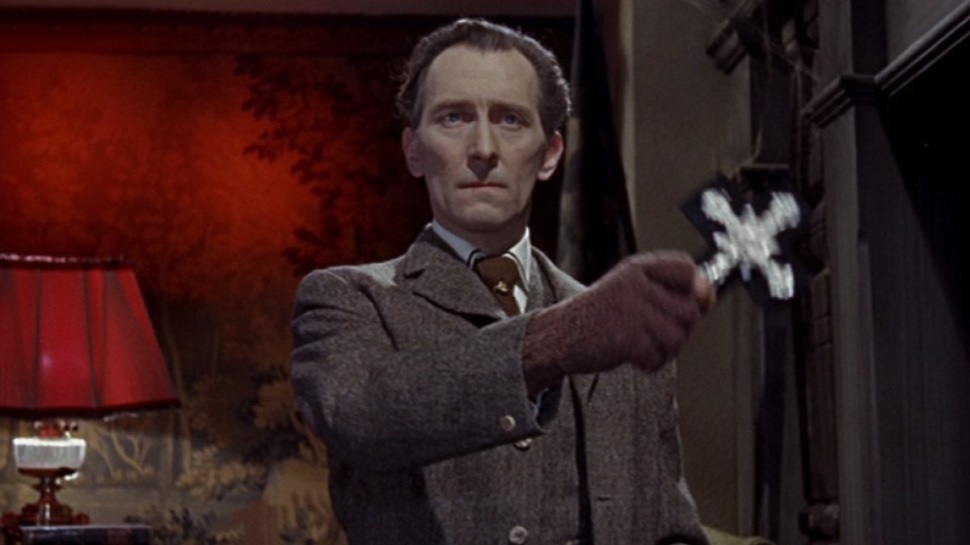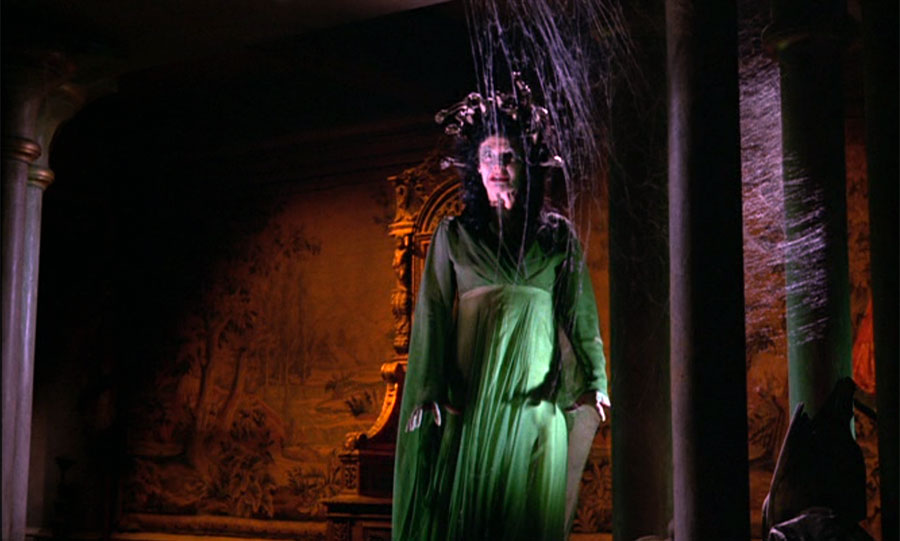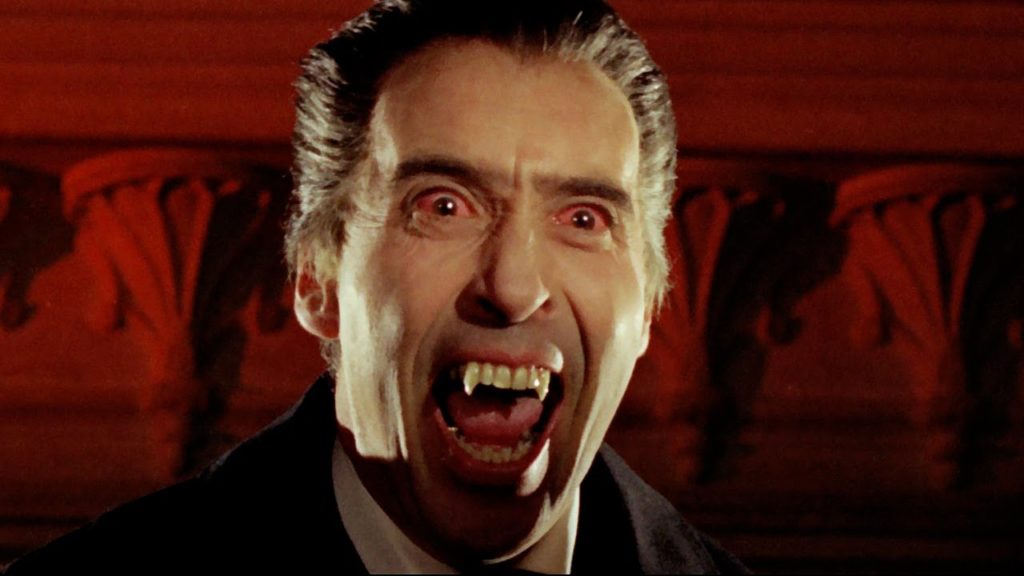Summer in New York and the streets are baking. Luckily, the Quad has been offering film buffs air-conditioned refuge, plus chills of a different kind: a series dedicated to Hammer, the British studio synonymous with Gothic horror.
Founded in 1934, Hammer Film Productions churned out mysteries and adaptations of radio serials before finding its niche in 1955 with the unexpected success of The Quatermass Xperiment, a sci-fi horror film based on the BBC television serial of (almost) the same name. (Hammer dropped the ‘e’ from ‘experiment’ to cash in on the British censors’ X certificate.) The Curse of Frankenstein (1957) and Dracula (1958, retitled Horror of Dracula in the US to prevent confusion with the earlier Universal film) were even more popular, adding Technicolor and gore and making stars out of Peter Cushing and Christopher Lee.
Part one of the Quad’s extensive retrospective covers 1956-1967, when Hammer released many of its best-known films. I’d seen only a handful of them and seized the chance to sink my teeth into a few more.
The Brides of Dracula begins with Marianne Danielle (Yvonne Monlaur), a young Frenchwoman on her way to teach at a girls’ school in Transylvania. When her coachman abandons her at an inn, the imperious Baroness Meinster (Martita Hunt) invites her to spend the night at her castle and, oblivious to the villagers’ anxious looks, Marianne accepts. She soon discovers the Baroness has confined her son (David Peel) to his room, chaining his ankle to a wall. Marianne quickly releases him. This proves unwise.
Despite its title The Brides of Dracula doesn’t actually feature Dracula. Instead Peter Cushing reprises his role as Dr. Van Helsing and does battle with the Baron. Peel is a compelling presence, creepier without fangs than with them. There’s a subtle undercurrent to the Baron’s charms which dissipates as soon as he bares his teeth. Cushing is one of the definitive big screen vampire hunters and you can see why. His Van Helsing is a no-nonsense man of action who charges into a vampire’s lair armed with little more than a crucifix and his wits. He takes the plot seriously—he reportedly helped rewrite the script—and because he does, so do we. Halfway through the film, Marianne unwittingly sits vigil beside the coffin of one of the Baron’s victims. The coffin is secured with heavy padlocks. Suddenly, one of the locks falls off without unlocking. We fear what lurks inside because Cushing has convinced us we should.
Gothic horror was such a rich seam that Hammer was constantly on the lookout for new monsters: The Gorgon was a rare foray into Greek mythology. Something is amiss in the village of Vandorf. A Gorgon named Megaera, sister of Medusa, is terrorising the inhabitants with her unfortunate habit of turning people to stone. This is inconvenient for the police, who are left with an embarrassing number of unsolved murders and for Dr. Namaroff (Cushing), the secretive chief doctor at the local asylum. When the police drop off the latest victim and request an autopsy, Namaroff drily replies, “On a body made of stone?” Yet he lies at the inquest, pinning the blame on an innocent (and conveniently dead) man who happens to be the son of his old acquaintance, Professor Jules Heitz (Michael Goodliffe). Heitz vows to clear his son’s name and recruits his other son, Paul (Richard Pasco), to help.
Director Terence Fisher (who also directed Brides and Prince of Darkness) and cinematographer Michael Reed get the most out of the Technicolor stock, cloaking Vandorf in gloom. We see the courtyard outside the Heitzs’ house most often at night, wind rustling leaves off a tree, water rippling in a pool. The pool is handy because for a film about a Gorgon, there is a surprising shortage of mirrors. In the original myth Perseus looked at Medusa’s reflection in his shield and slew her. In Hammer’s tale, Paul catches sight of the Gorgon’s reflection and is bedridden for days. This isn’t the only liberty the script takes: Medusa’s sisters were named Stheno and Euryale; Megaera was one of the Furies. The bodies pile up, but the closer the film gets to the Gorgon, the less threatening she appears—the snakes in her hair don’t writhe as they should.
Fortunately the cast is ample distraction. Cushing and Christopher Lee trade types and the latter plays a hero for a change. As Paul’s friend, Professor Karl Meister, Lee is a shaggy-haired dynamo, able to pin two policemen to a wall with a swipe of his arm. Plus there’s Patrick Troughton—soon to play the Second Doctor in Doctor Who and face a Gorgon of his own—as the obstructive chief of police.
While The Gorgon relies on mood, Dracula: Prince of Darkness is more interested in action. The film opens with the climax of Dracula: Van Helsing versus the Count (Lee). And that’s the last we see of Cushing. Instead the protagonists are four English travellers, the Kents: Charles (Francis Matthews); his wife Diana (Suzan Farmer); his brother Alan (Charles Tingwell); and Alan’s wife Helen (Hammer stalwart Barbara Shelley, who also starred in The Gorgon). The Kents are sadly ignorant of how to survive Űberwald, which makes for a memorable holiday.
A sequel to Dracula, Prince exists to showcase Lee but makes us wait for him. Instead we get to know the Kents, especially Matthews’ plucky Charles, who is the designated hero. It’s a pity he isn’t bitten: all that good cheer coupled with a thirst for blood would have been fun to watch. Of what we do have, Dracula’s resurrection is the highlight. The Count’s loyal butler hoists the victim’s body up over Dracula’s tomb and summarily slits its throat. Blood the lurid red of Kensington Gore gushes forth, pooling on Dracula’s ashes. The blood steams and a cobweb-like mass forms, solidifying into the shape of a man. Dracula has risen from the grave. Lee is as imposing as ever, looming over his prey, but he never speaks. He later insisted the dialogue was so bad he refused to speak. Screenwriter Jimmy Sangster claims he never wrote any in the first place. Either way, you feel robbed of Lee’s magnificent voice. Still the film is brisk entertainment with a satisfying ratio of thrills to chills.
I enjoyed stepping deeper into Hammer’s House of Horror. Part two of the Quad’s retrospective, intriguingly subtitled ‘The Decadent Years’, is due in July.




Leave a Reply